#common eastern bumblebee
Text

Bombus impatiens on Hibiscus moscheutos / Common Eastern Bumblebee on Swamp Rosemallow
#Bombus#Apidae#Hibiscus moscheutos#Hibiscus#malvaceae#common eastern bumblebee#Bumblebee#Bee#Swamp Rosemallow#rose mallow#Rosemallow#native pollinators#Native plants#Native flowers#Pollinators#Plants#Flowers#Insects#Nature photography#Native insects#photography#photographers on tumblr#Durham#Durham NC#North Carolina#Home#🌺🌻#Crimsoneyed Rosemallow#bombus impatiens
46 notes
·
View notes
Text

A wee bee
Saturday September 21st 2024 3:46pm
#2024#september#nature#bug#bugs#insect#insects#bee#common bumblebee#eastern bumblebee#bumble bee#bumblebee#common eastern bumblebee#flower
8 notes
·
View notes
Text

Stepping Up
#bee#antennae#nature#apidae#asters#backyard gardening#summer to fall#New England#common eastern bumblebee
217 notes
·
View notes
Text
Common Eastern Bumblebee 🐝 #shorts #bumblebee #bee #bytesizeambs
youtube
This cutie is a Common Eastern Bumblebee. They're some of the most abundant pollinators in eastern North America.
#bytesizeambs#youtube shorts#youtube#bytesizeambs shorts#shorts#nature#hiking adventures#cute critters#subscribe#tiktok#adorable bumblebee#cute bumble bee#bumblebee#bee#save the bees#common eastern bumblebee#bombus impatiens
6 notes
·
View notes
Text
Bumblebee on salvias
June 25th 2023
#i dont remember what kind of bumblebee and idk the latin name for these salvias im a fake gardener i know#outdoor gardening#flowers#purple flowers#salvias#bees#bumblebees#common eastern bumblebee#I THINK????? MAYBE?????#pollinator gardening#out of queue#ani rambles#man hotels gonna have my head for not knowing the latin name for salvias /j
6 notes
·
View notes
Photo
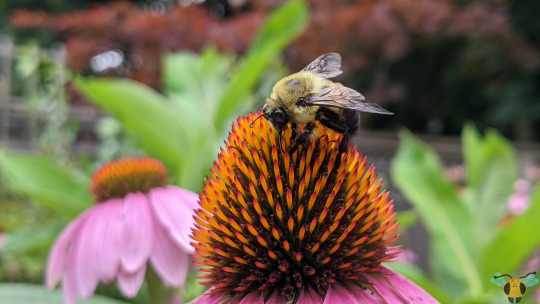


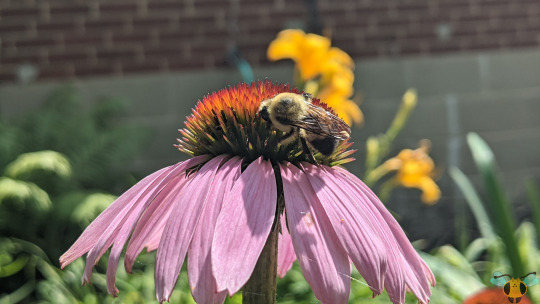




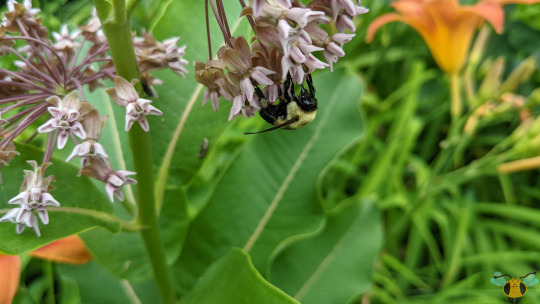

Common Eastern Bumblebee - Bombus impatiens
They have returned to the garden and the wild world with spring’s awakening! While mostly summer pictures here, Bumblebees can wake up and get to work earlier than other Bees since they can work up their bodies and warm their muscles. With the warmer days Toronto’s had recently and all the sun, the newest Bees can begin the next year of foraging and establishing new colonies in the ground or abandoned hollows. I see many Bumblebees in my yard when spring arrives since the our first flowers begin to bloom. The majority of the blooming comes from our white magnolia tree and is supplemented by errant tulips and smaller flowers, all of which can be Bumblebee sized. Picture 6 shows a Bumblebee enjoying a tulip and searching for delicious pollen and nectar. When they aren’t investigating the flowers, the Bees that I’ve found fly close to the ground, trailing along the vegetation. They’re probably searching for either a mate (in the case of males) or a suitable hole to begin a colony (in the case of young queens). It’s definitely the latter as fertilization happens before the new year and now the young queens emerge to explore the world. Though they explore our yard hasn’t yet been nested by these little fuzzies. Our yard not being a suitable nesting site may be a good thing, as for all the cuddliness and fluffiness we associate with Bumblebees, they can be quite bombastic and fierce when defending their home or if their nest is disturbed.
As I’ve learned from The Sting of the Wild, it’s best not to probe, bother or kick around an area where Bumblebee activity is high for fear of disturbing the nest. Furthermore, unlike Honeybees which can only sting once, Bumblebees can sting multiple times since they lack backward-turned barbs on their stinger. While well-armed, they don’t just go around stinging things impatiently (despite what their species name suggests) since they don’t hunt for food. While they “hunt” for flowers, they are strictly vegetarians who don’t even need to consider bringing insect prey to feed their larvae. It’s an odd thing that this social branch of insects within Hymenoptera turned to vegetarianism while most of their relatives bring some form of prey to the colony to speed things along, and yet it’s perfectly normal to us. With the Bees, it’s all flowers and honey, and we can enjoy that (and so can they). Bumblebees like these can make honey to a degree, but the material collected isn’t refined (in the same way that Honeybees do) and what’s made isn’t enough for our own consumption. What they collect is just enough for their own hive! The collection process will begin here in late-May, early-June once the first batch of workers are ready thanks to the queen’s hard work.
Pictures were taken on May 1; June 1, 23, and 26; July 14 and 16, 2021 with a Google Pixel 4.
#jonny’s insect catalogue#ontario insect#bee#common eastern bumblebee#bumblebee#hymenoptera#insect#toronto#may2021#june2021#july2021#2021#entomology#nature#invertebrates#arthropods
4 notes
·
View notes
Text
Eastern Bumble Bees are Big and Fuzzy
Bumbledore
I couldn’t resist the name on the first photo because, yes, I am a Harry Potter nerd. And although bumble bees don’t really have anything to do with Harry Potter, I’m also a bug nerd. I’m very happy to be seeing quite a few of them now that the blackjack flowers are blooming. The eastern bumble bee (Bombus impatiens) is probably my very favorite bee because it is fluffy and fuzzy and…
#beautiful bumble bees#bumble bee photographs#bumble bee photography#bumble bees#common eastern bumblebee#eastern bumblebee#Florida bees#Florida bumble bees#Florida pollinators#fuzzy bees#fuzzy bumble bees#insects#large bees#large bumble bees#pollinators
0 notes
Text
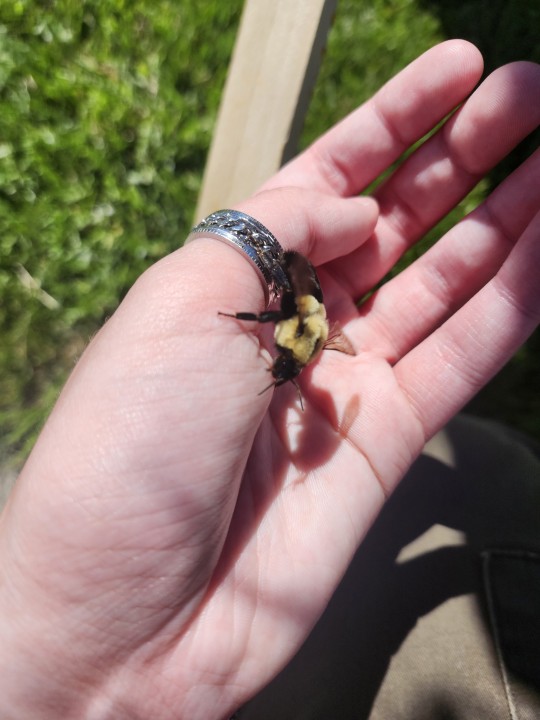
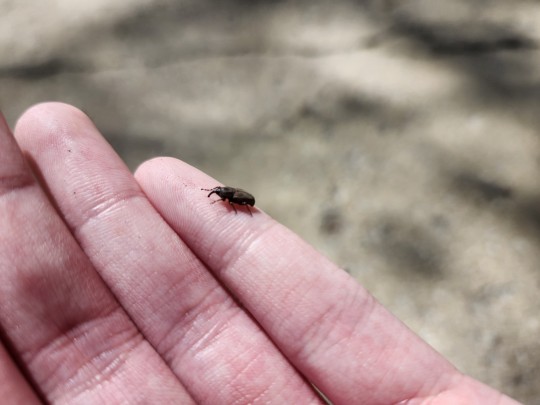
bugs i found
1 note
·
View note
Text




















Walk with me: Mid-summer hike through a Central Appalachian forest. As summer hurtles toward its final explosive act, the forest's living things embrace urgent, primordial impulses triggered by shrinking daylight: to bloom, to seed, to feed, and to reproduce before the killing frost of Autumn shocks the earth into hibernation. In the deep forest, the fetid perfume of decaying fungi signals the countdown has begun. From top: a bumblebee traversing the fanning pink flowers of hollow-stemmed Joe-Pye weed (Eutrochium fistulosum); the maturing red stem and flowers of seedbox (Ludwigia alternifolia), also known as rattlebox and square-pod water-primrose, a very attractive wetlands annual with four-sided seed capsules; cowbane (Oxypolis rigidior), also known as common water dropwort, a delicate, marsh-loving member of the carrot family that also happens to be toxic; Allegheny hawkweed (Hieracium paniculatum), also known as panicled hawkweed, a spindly-stemmed member of the dandelion tribe; the lovely and hallucinogenic fly agaric (Amanita muscaria); a sprawling colony of sulphur shelf fungus (Laetiporus sulphureus), an edible delicacy otherwise known as chicken of the woods; a red eft (Notophthalmus viridescens); white wood aster (Eurybia divaricata); a twin set of common puffballs (Lycoperdon perlatum); the fungal version of suburban sprawl courtesy of orange moss agaric (Rickenella fibula); a gelatinous serving of orange witches' butter (Dacrymyces chrysospermus); a fiery clump of eastern Jack-o-lanterns (Omphalotus illudens); a potter wasp (Ancistrocerus campestris) drinking from the clumped white flowers of virgin's bower (Clematis virginiana); one of my all-time favorite critters, a locust borer (Megacyllene robiniae), taking its nectar fill from flat-top goldentop (Euthamia graminifolia), also known as grass-leaved goldenrod; a green metallic sweat bee (Augochloropsis ?) finding sustenance from parasol white-top (Doellingeria umbellata var. umbellata), also known as flat-top aster; and the intricate purple flowers of tall ironweed (Vernonia gigantea).

#appalachia#vandalia#west virginia#wildflowers#flora#summer#coopers rock state forest#glade run trail#insects#bumblebee#locust borer#potter wasp#green metallic sweat bee#amphibian#red eft#eastern newt#hollow joe-pye weed#seedbox#cowbane#allegheny hawkweed#white wood aster#virgin's bower#flat-top goldentop#grass-leaved goldenrod#parasol white-top#flat-top aster#tall ironweed#fungi#fly agaric#sulphur shelf fungus
161 notes
·
View notes
Text

Bombus impatiens on Stokesia laevis / Common Eastern Bumblebee on Stokes' Aster at the Sarah P. Duke Gardens at Duke University in Durham, NC
#bombus impatiens#Bombus#Apidae#Stokesia laevis#Stokesia#Asteraceae#Common Eastern Bumblebee#Bumblebees#Stokes' Aster#Stoke's Aster#Cornflower Aster#Native insects#Native plants#Native flowers#Bees#Insects#Plants#Flowers#Pollinators#Wildflowers#Nature photography#photography#photographers on tumblr#Sarah P. Duke Gardens#Duke Gardens#Duke University#Durham#Durham NC#North Carolina#🌺🌻
13 notes
·
View notes
Text



An adorable bumblebee & sachem sharing some Autumn joy flowers
Saturday September 21st 2024 3:14pm
#2024#september#nature#flower#flowers#bug#bugs#insect#insects#animals#bee#Eastern bumblebee#common bumblebee#common eastern bumblebee#bumble bee#bumblebee#sachem#skipper butterfly#skippers#skipper#butterfly#butterflies
12 notes
·
View notes
Text
so far this year i've seen three bumblebee species in the yard: Common Eastern Bumblebee, Two-Spotted Bumblebee, American Bumblebee
Which is amazing enough on its own
But I've watched the two-spotteds and American bumbles in the meadow and seen them land in the weeds and then seemingly disappear into the ground???
Which, I am pretty sure, means that they must have a nest
Which means...they aren't just visiting the meadow, they've come there to live and raise families...
...Oh...
1K notes
·
View notes
Text


Solidago canadensis (Canada goldenrod) and Bombus impatiens (common eastern bumblebee)
Ah, Canada goldenrod in full bloom. What a wonderful sight! Canada goldenrod is not a native plant on the west coast being originally from the eastern and central parts of North America. Come to think of it, this common eastern bumblebee is also non-native being an escapee from local commercial greenhouse operations. Canada goldenrod is now considered an invasive weed (and an agricultural pest) throughout Europe and Asia. What a shame.
However, Canada goldenrod is obviously not to blame for the recent (and radical) worldwide decline in bumblebee populations. In 1950, there were 2.5 billion humans on Earth and now there's 8 billion. That's a lot of extra hungry mouths to feed. Twenty species of plants supply 90% of our food and just three - wheat, corn and rice - constitute about half. Unfortunately, all three of these plants are wind-pollinated. The hundreds of millions of acres sown in monocrops (550 million acres for wheat alone) are virtual deserts for bumblebees.
Grass is also wind-pollinated and in addition to all the land needed to graze cattle and sheep, we have another culprit: the suburban lawn. In the US for example, there are forty million acres of lawn. Twenty percent of Massachusetts, Rhode Island, Delaware and Connecticut are covered in lawns. True, grass seed often contains clover (which bumblebees love) but most gardeners fire up the lawnmower as soon as clover flowers appear. I know it can be hard to face unpleasant facts but if you're looking for someone to blame for the bumblebee crisis, just go look in your bathroom mirror.
#flowers#photographers on tumblr#Canada goldenrod#bumblebee crisis#invasive plants#fleurs#flores#fiori#blumen#bloemen#the other side of the tracks#Vancouver
98 notes
·
View notes
Text





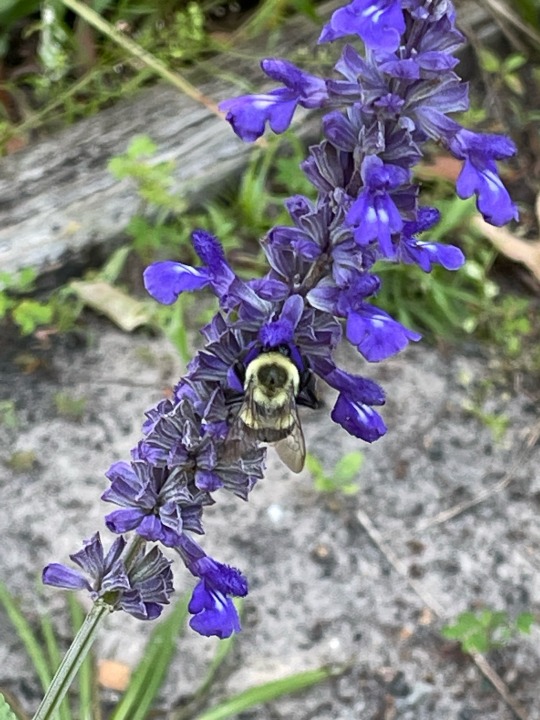



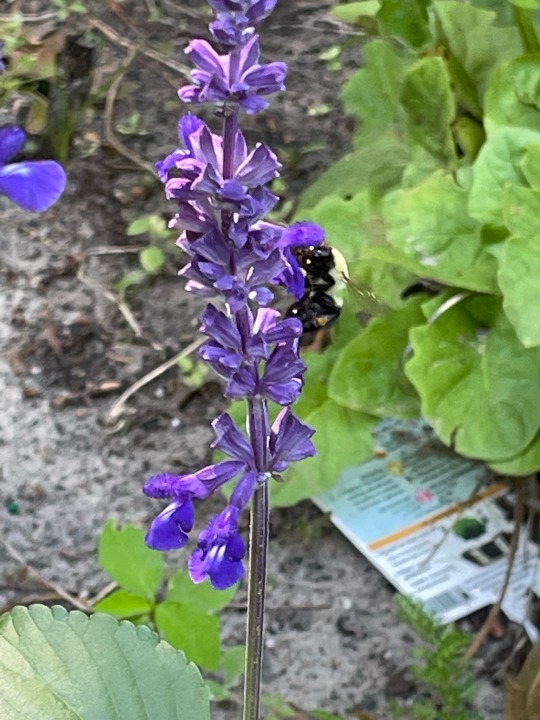
Common Eastern Bumble Bee on some salvias
5/04/2023
#outdoor gardening#bees#common eastern bumblebee#bumble bees#pollinator garden#pollinator gardening#flowers#purple flowers#salvias#ani rambles#out of queue#anis garden 2023#anis garden#my garden#my garden 2023
4 notes
·
View notes
Text
saved a common eastern bumblebee from my pool. it was too exhausted to fly so I ferried between flowers for awhile to help it regain its energy. after lots of flowers and some sugar water, it finally had the strength to fly and feed itself :)
214 notes
·
View notes
Text
Eastern Bumble Bees are Some of the Very Best Pollinators
Big Bumble
Last week when I was out there, the roadside in front of the cattle egret rookery was filled with these big eastern bumble bees (Bombus impatiens). The reason being that there were several different types of flowers blooming along the roadside. The rookery is located in a swampy marsh area, and is one of the few places that is still holding water right now, so it’s also one of the few…

View On WordPress
#are bees#bee ohotography#bee photographs#bees#bumblebee photographs#bumblebee photography#bumblebees#colorful bees#common bumblebees#common eastern bumblebee#eastern bumblebee#Florida bees#Florida bumblebees#Florida insects#insect photographs#insect photography#insects#large bees#nonaggressive bees#social bees
0 notes